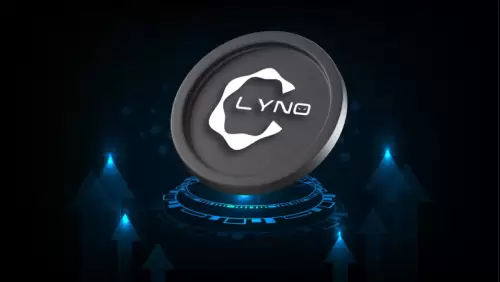Ripple's pursuit of a US national bank charter signals a bold step towards regulated finance, potentially reshaping the stablecoin landscape.
Ripple, US Bank, and Stablecoin Expansion: A New Era of Regulated Finance
Ripple is making waves with its move towards deeper integration into the US financial system. The company's application for a national bank charter and a Federal Reserve master account mark a significant step in this direction. This isn't just about Ripple; it's a sign of the times as crypto firms seek regulatory clarity and a bridge to traditional finance.
Ripple's Regulatory Ambitions
Ripple has formally applied for a national bank charter with the Office of the Comptroller of the Currency (OCC). This move signals a major ambition to operate within regulated finance. If approved, Ripple would gain federal oversight, adding to its existing state-level regulation through the New York Department of Financial Services (NYDFS). CEO Brad Garlinghouse emphasizes that this dual oversight would boost trust in Ripple's stablecoin, RLUSD.
Simultaneously, Ripple is pursuing a Federal Reserve master account through its subsidiary, Standard Custody. This would allow Ripple to hold RLUSD reserves directly with the Fed, reducing reliance on commercial banks and enhancing reserve security. Garlinghouse believes this direct custody aligns with institutional expectations and strengthens RLUSD's position in the competitive stablecoin market.
A Changing Regulatory Landscape
Ripple's applications coincide with a shift in Washington's policy towards crypto. The rollback of restrictions on banks serving crypto firms has created a more favorable environment for companies seeking direct links with the U.S. banking system. Ripple's move could serve as a benchmark in this transition, meeting the growing demand for stable, trusted digital payment systems.
RLUSD: A Regulated Alternative
Ripple's stablecoin, RLUSD, is positioned as a fully regulated alternative in the rapidly expanding stablecoin sector. The company's efforts aim to ensure RLUSD meets evolving compliance standards while facilitating cross-border payments. By crafting an infrastructure that supports large-scale financial operations, Ripple hopes to accelerate RLUSD adoption, especially among institutions that prioritize regulatory clarity and risk mitigation.
The Bigger Picture: Stablecoin Expansion
Ripple isn't the only player making moves. Circle is also seeking a national trust bank license, indicating a broader trend towards aligning stablecoin operations with U.S. banking law. Even PayPal is expanding its stablecoin, PYUSD, by launching it on the Stellar network, pending regulatory approval. This expansion aims to broaden access to PYUSD for developers and users, highlighting the increasing importance of stablecoins in everyday payments and financial activities.
My Take: A Necessary Step Forward
In my opinion, Ripple's pursuit of a national bank charter and a Fed master account is a crucial step towards legitimizing the crypto industry. The increased regulatory oversight will foster greater trust and confidence, attracting both institutional and retail investors. While the OCC review may take months, Ripple's commitment to compliance and its strong relationship with the NYDFS position it well for success. This move could indeed place Ripple ahead of its competitors in integrating with the U.S. financial system, as Ripple has a lot of regulatory experience in the United States.
As PayPal CEO Alex Chriss put it, "More blockchains, greater access—and we’re not stopping now." It's clear that the future of finance is being shaped by these bold moves, and Ripple is right in the thick of it.
So, keep an eye on this space, folks! It's gonna be an interesting ride.













































































